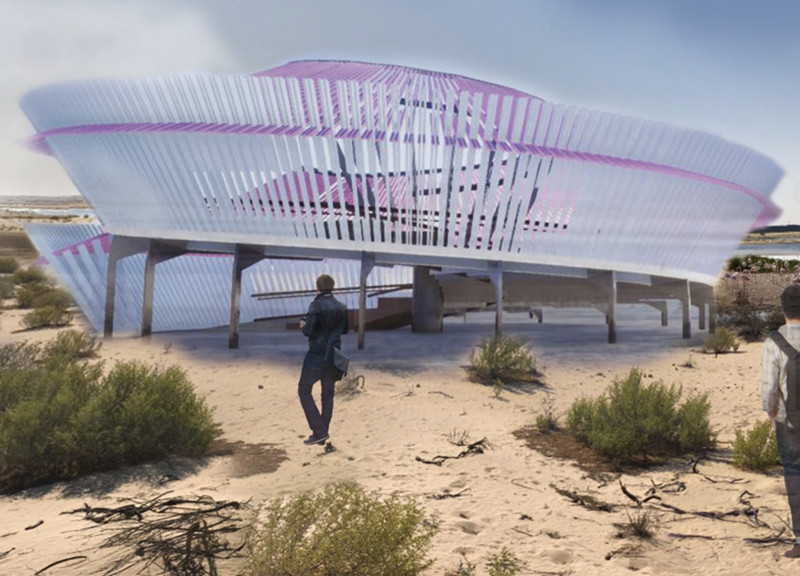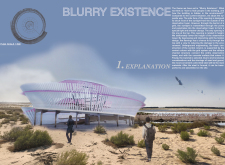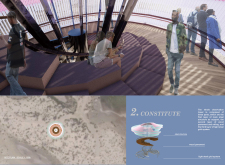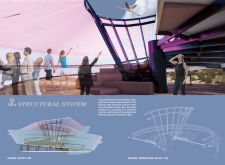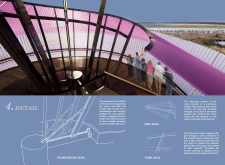5 key facts about this project
The design titled "Blurry Existence" is situated within a natural landscape, creating an observation tower that blends with its surroundings while providing minimal disruption to local wildlife. The overall concept focuses on concealment, emphasizing how the structure can hide human presence while also being discreet within the environment. Through careful design, the observation tower acts as a contemplative space for visitors and shows respect for the habitats of local animals, particularly flamingos.
Design Intent
The central theme of "Blurry Existence" questions traditional ideas of visibility in architecture. The observation tower features an opening that prevents direct sunlight from entering but allows soft, filtered light to pass through a grid system. This design reduces glare and creates interesting patterns of light and shadow inside. The tower's reduced height enhances these interactions, enabling birds to fly freely without obstructions from above, promoting ecological awareness.
Structural Composition
The tower consists of three layers, each serving a distinct purpose. The first layer provides the primary structural support, ensuring the tower is stable and secure. The second layer includes wood for the pavement and railings, allowing visitors to engage more closely with the space. The third layer contains a light grid system, which supports the structure and helps manage the light coming into the observation area.
Circulation and Privacy
A semi-helical pathway runs through the design, helping with movement while also providing privacy for users. This pathway is strategically placed to obscure direct lines of sight, creating more intimate spaces within the broader environment. This approach encourages visitors to connect with both the structure and the landscape, fostering a feeling of seclusion and tranquility.
Environmental Considerations
The underground construction for the central column reflects a dedication to lowering the project's ecological impact. This part of the design ensures structural strength while minimizing the tower's footprint on the land. The choice of materials supports this commitment; cold-rolled steel is utilized for its practicality and low environmental footprint, and the inclusion of wood elements adds a tactile warmth to the observational experience.
The grid system not only functions as structural support but also softly filters sunlight as it enters the space. As the day progresses, the changing patterns of light create a dynamic atmosphere, allowing visitors to experience the tower in different ways as they observe their surroundings.


